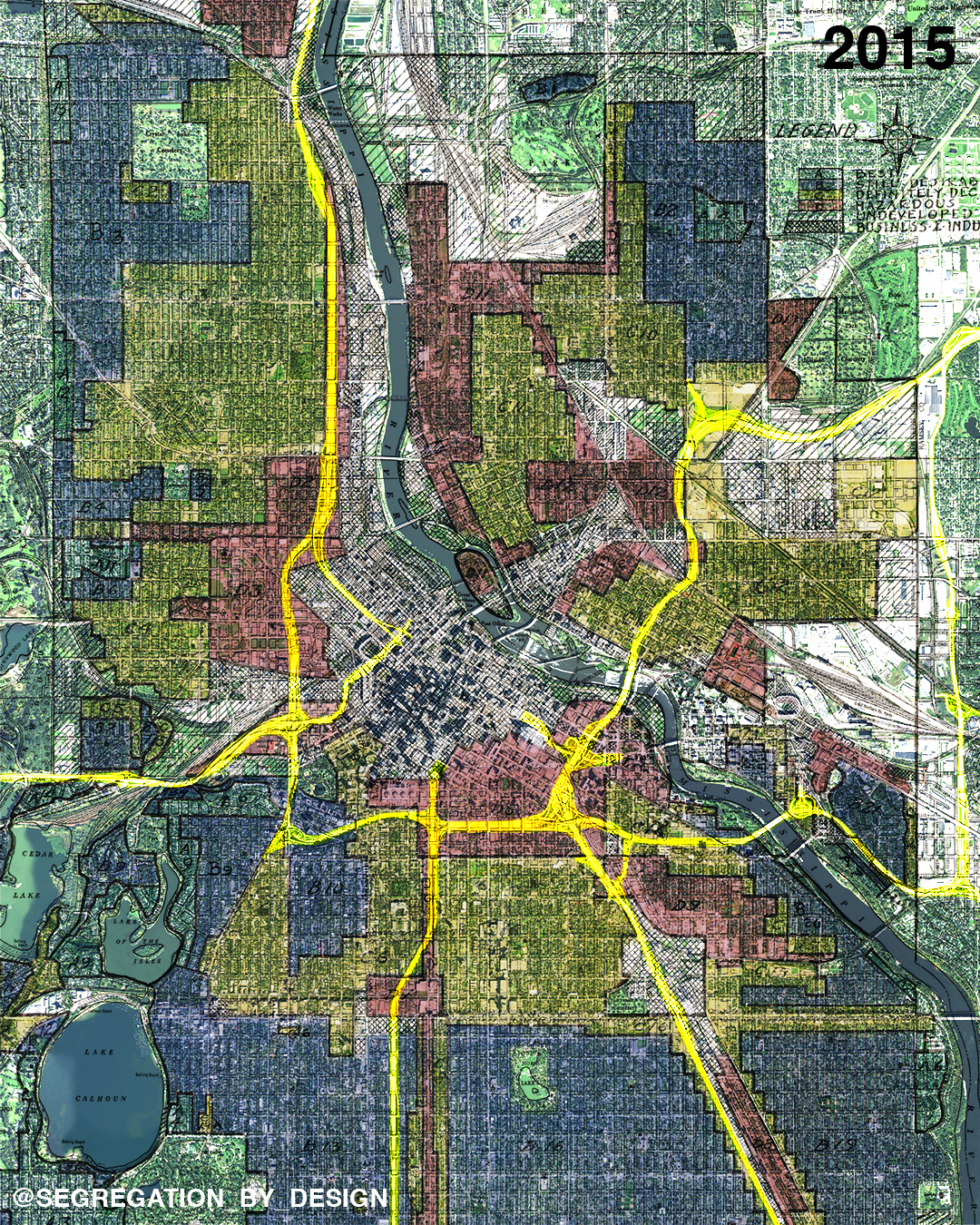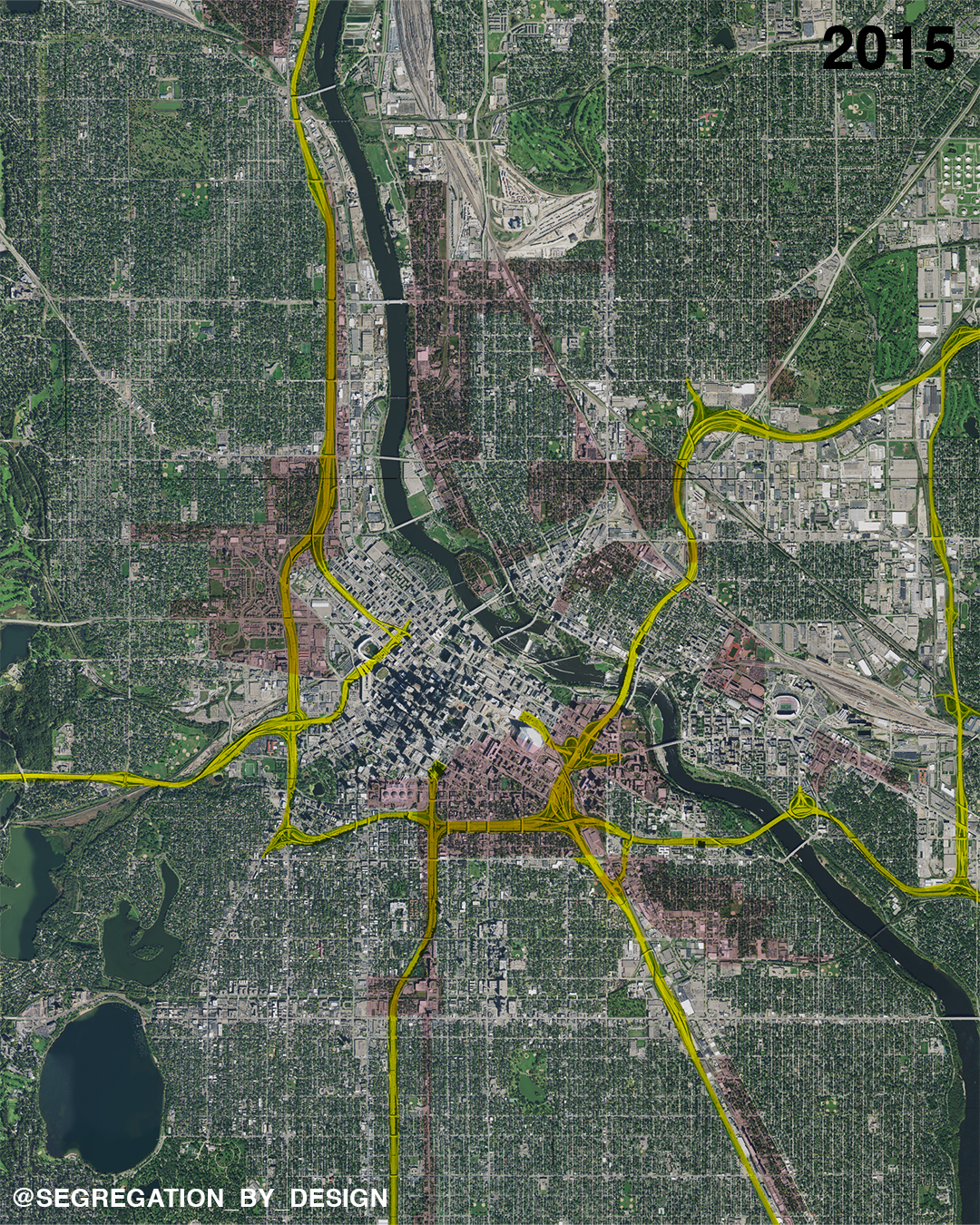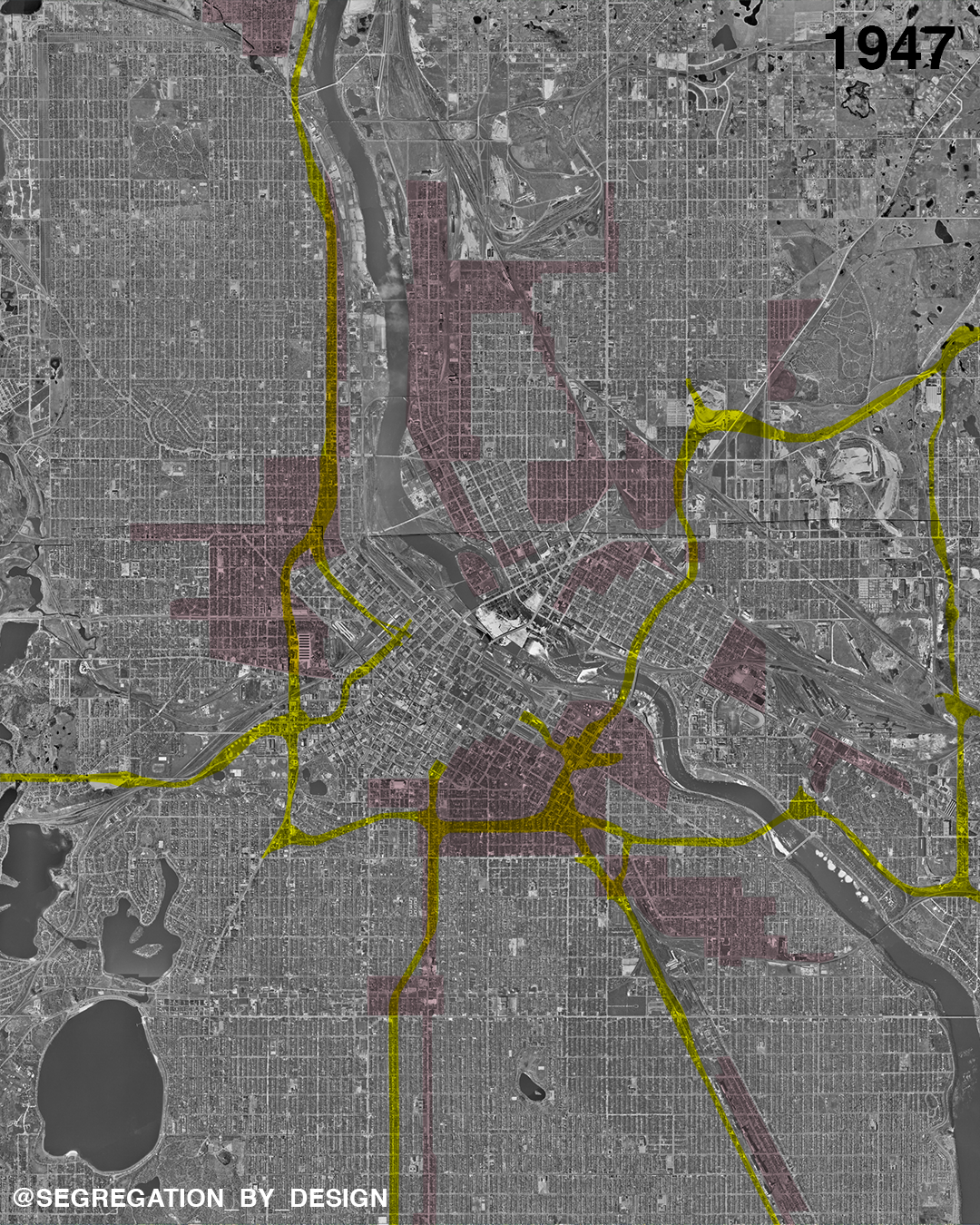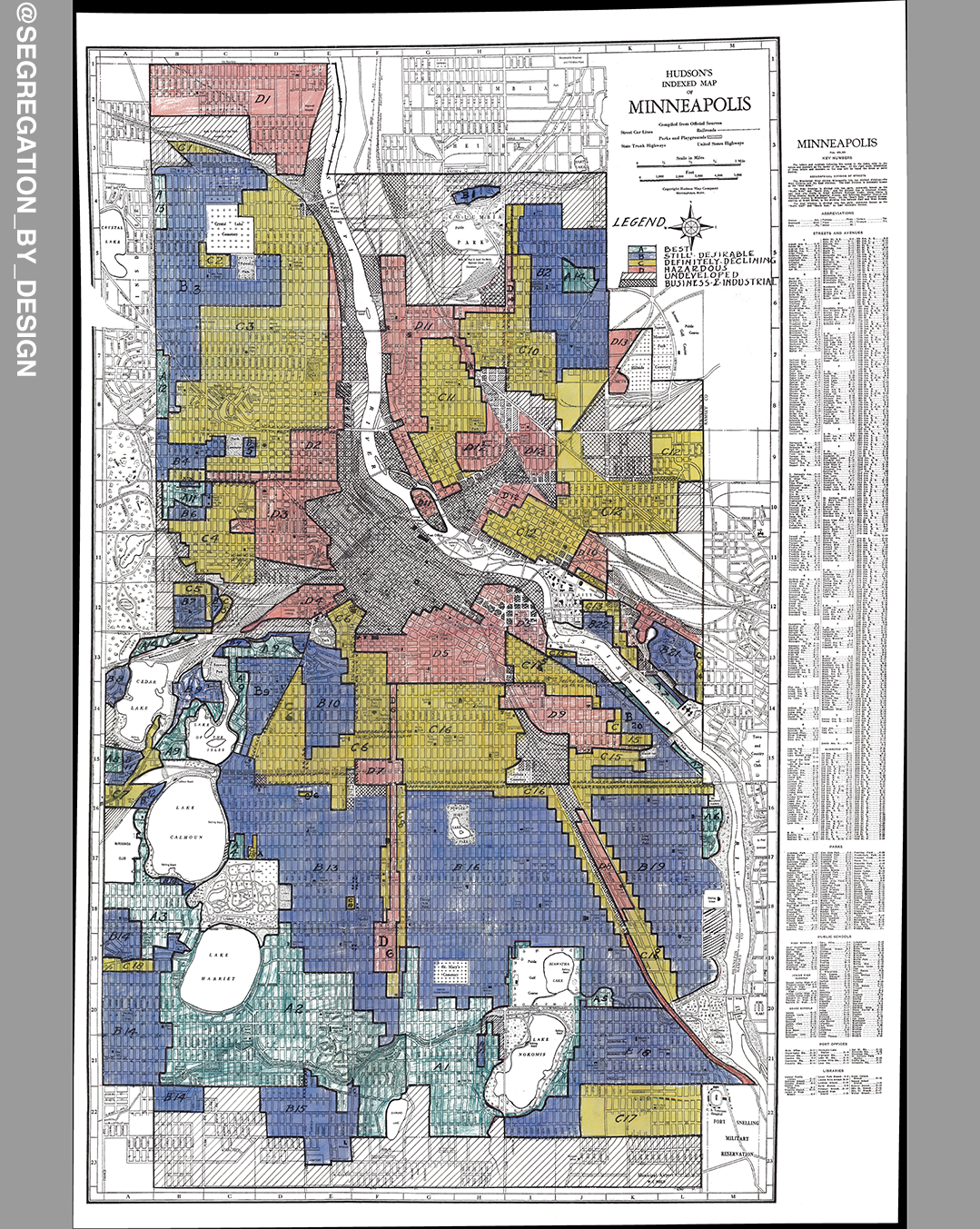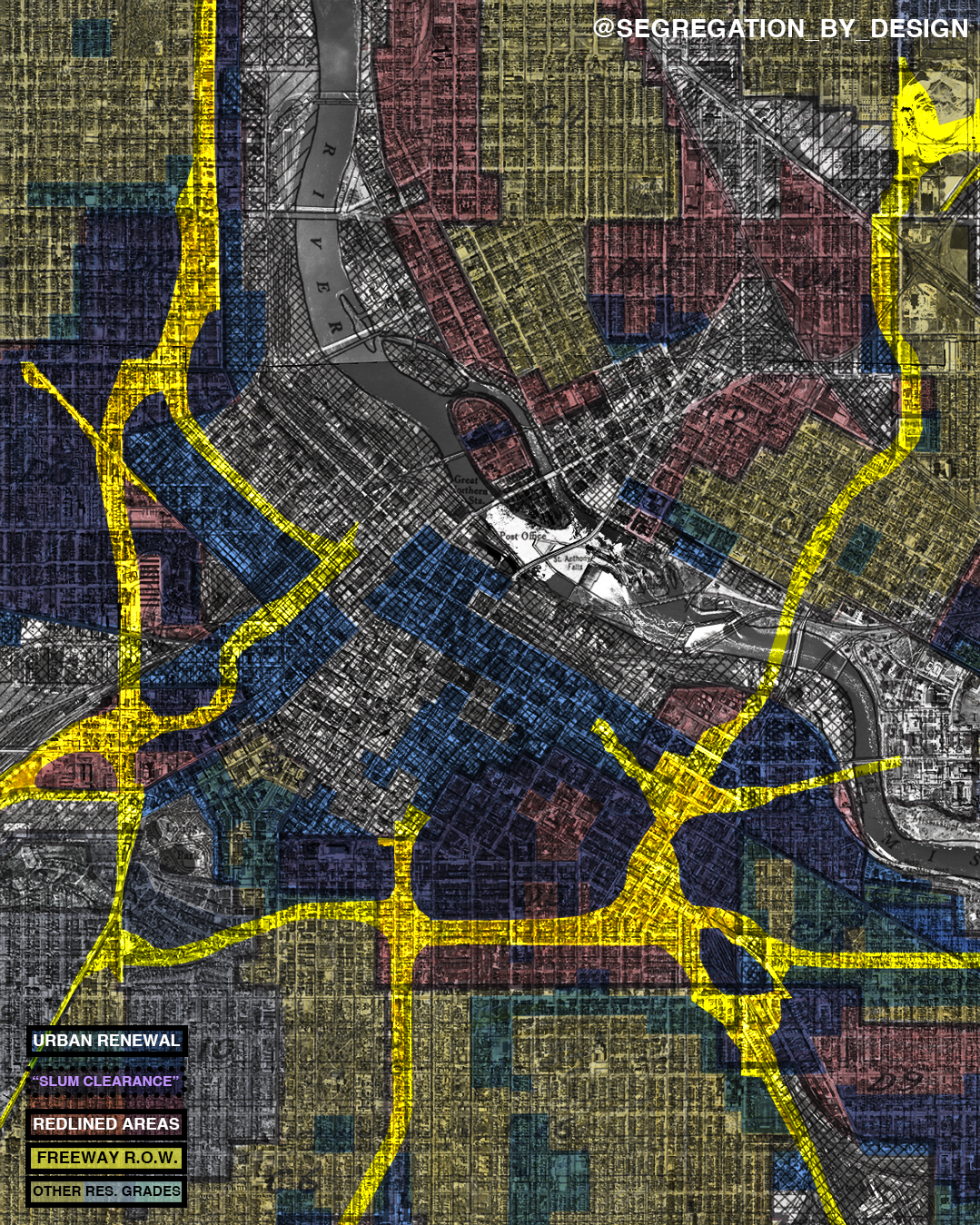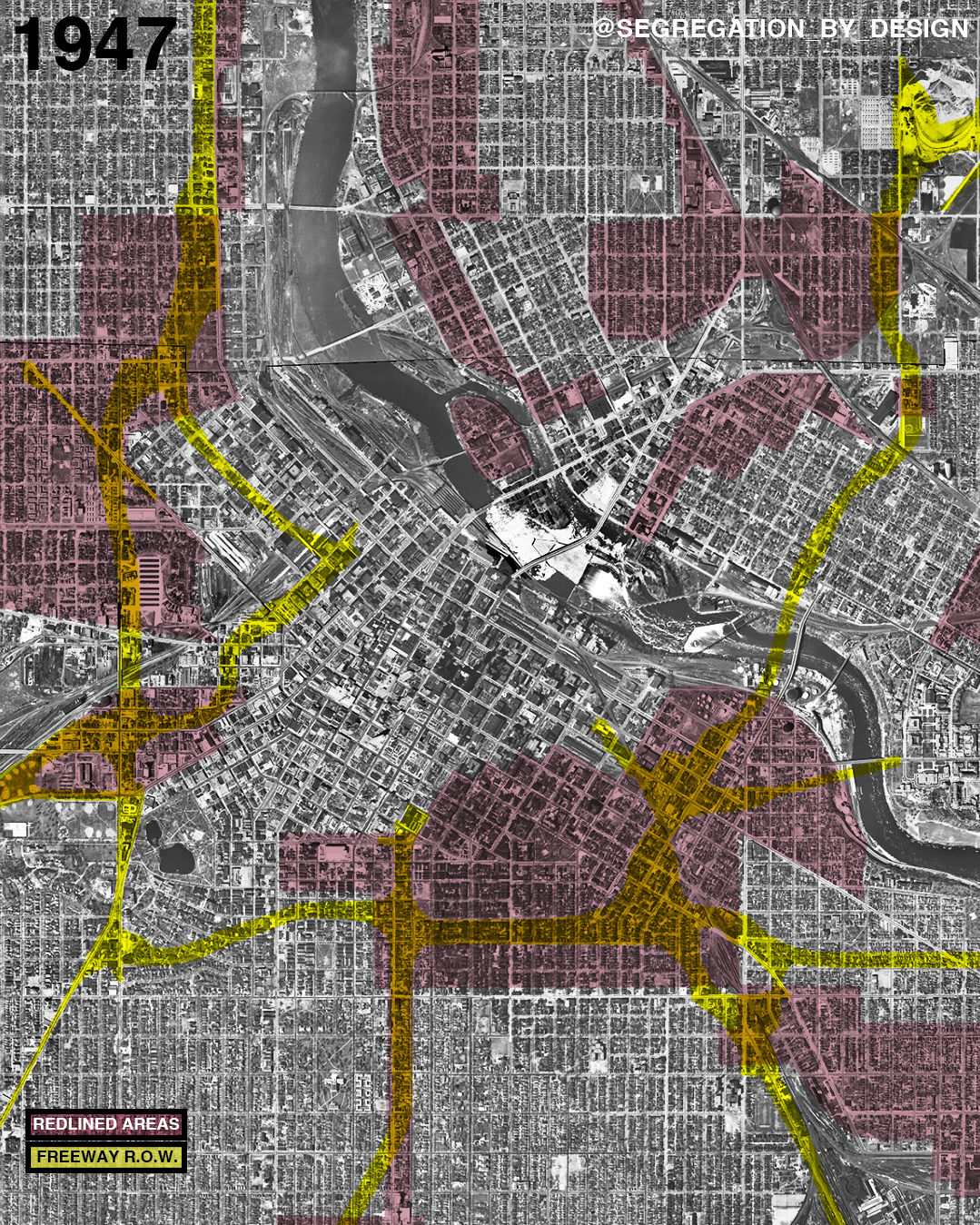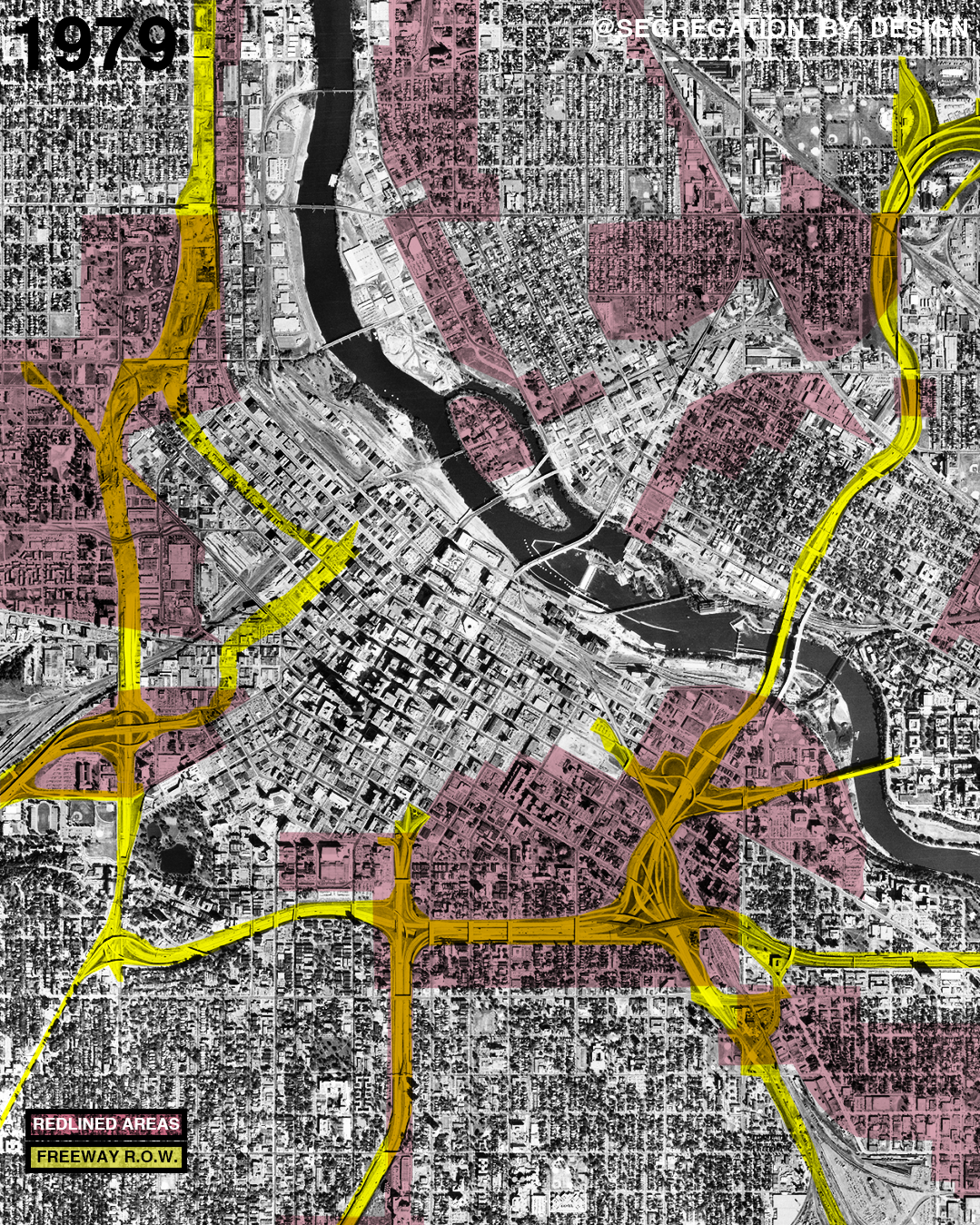MINNEAPOLIS: REDLINING
Under the Demonstration Cities and Metropolitan Development Act of 1966, Minneapolis was chosen in November 1967 as one of sixty-three cities nationwide to participate in the federally sponsored Demonstration Cities (Model Cities) Program. The program's goal was to implement a "total attack" approach on what it identified as the social, economic, and physical problems of a specific area of the city. In practice this meant the near complete demolition of nearly all the formerly-redlined, integrated neighborhoods in Minneapolis.
In the end, under direction and with funding from the Federal Housing and Urban Development Department (HUD), the government demolished over 7,000 homes and displaced roughly 25,000 people. Most were forced to the suburbs or to new high-rise housing projects adjacent to the freeway. Despite having an only 3% nonwhite population by 1960, 35% of those displaced in Minneapolis were people of color. Much of the rest were recent Eastern European immigrants. The original redlining map notes of one the neighborhoods later demolished, "On the west between Lyndale and Humboldt Avenues from Plymouth to the southern boundary of this area, most of the population today is of the poorer class of Jew and colored people." (source: @urichmond)

